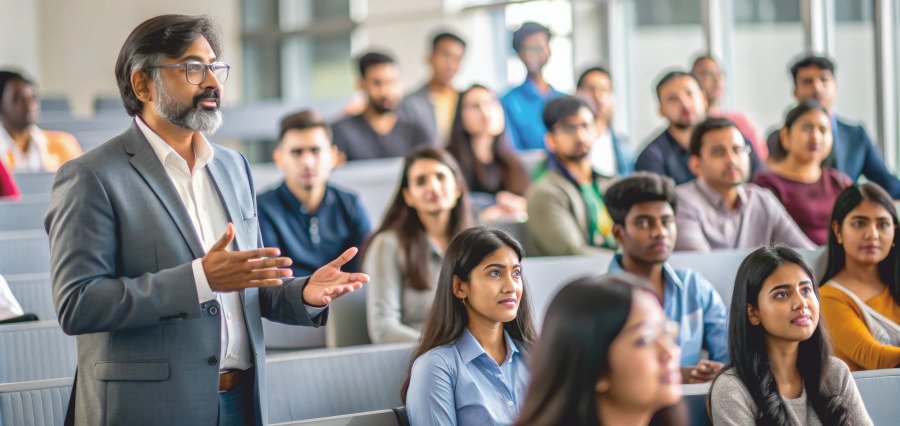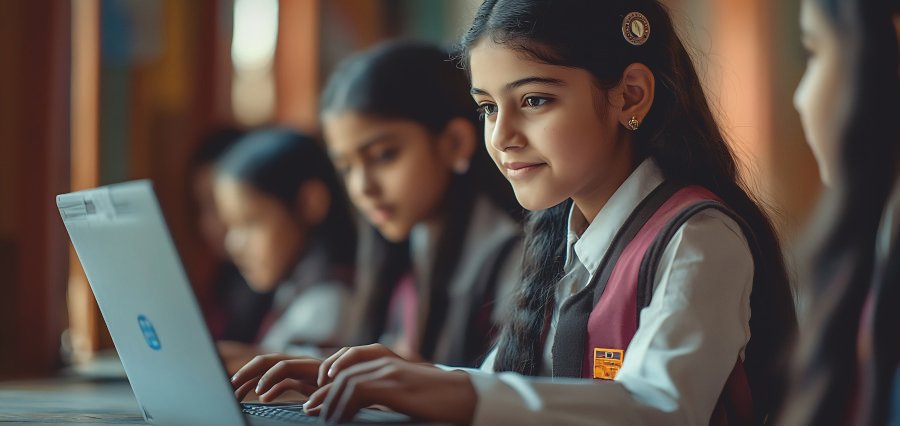Shaping Futures
Low standards of education can never be seen in the education system in India. However, something out of the ordinary is happening in 2025. Schools throughout the country are busting out of the textbooks and the tests to come up with a more modern and holistic way of learning. These schools are changing the new standards through focusing on innovation, self-development, technology and global perspectives. We examine more closely how they are changing the future of education.
The Use of Technology in Classrooms
The application of technology in improving learning is one of the greatest changes that has occurred in the best schools in India. The classrooms are no longer rows of desks and chalkboards. They are, instead, smart, interactive areas with digital equipment, like interactive screens, tablets and cloud-based learning spaces.
Virtual labs allow students to safely and more thoroughly conduct experiments in science. The subject areas include mathematics and coding, where adaptive software will be applicable in order to tailor the lessons to the personal pace of learning, making the process of learning the subject matter even more personal and engaging. This is not just a fun application of technology, but students are also getting prepared to live in a world where digital skills matter.
Specialise in Problem-Solving and Critical Thinking
Gone are the days when memorisation was given priority. A new generation of Indian schools now trains students to think and address real-life issues. Hands-on activities that include things such as constructing environmentally friendly models, developing community service strategies, or creating applications to address the problems in the area are all part of class projects.
This case study method educates the students to practice their knowledge, analyse and develop solutions. It also equips them with significant life skills that extend well beyond exams- such as making decisions, being creative, and leadership.
Worldview and Intercultural Interchange
The best Indian schools understand that modern students are citizens of the world. Many schools encourage international exchange programs, virtual interaction with students in other countries, and world events to widen their horizons.
Students engage in virtual debates, science fairs and cultural projects with students all over the globe. This exposure would make them aware of the various cultures, work in different teams, and be empathetic- a highly critical skill in the modern globalised world.
High Emphasis Wellbeing and Wholeness
Academic success is not all it takes to be a modern education. The mental and physical well-being of students has become the priority of leading schools in India. Mindfulness programs, counselling, yoga, and physical fitness are included in the regular schedule of the schools.
Such attempts assist students in dealing with stress, gaining confidence, and having a healthy lifestyle. Schools also promote extracurricular activities like music, sport, drama and art that enable students to find and develop their talents.
Internship and Industry Experiences
Close cooperation with industries and professionals is another benchmark practice in the best Indian schools. Students not only study theory, but they can also directly engage with business executives, scientists and engineers through workshops, seminars, and internships.
For instance, a student interested in robotics can be offered an opportunity to work on an actual project in a technology company or attend an industrial coding camp led by field experts. These links bring students into touch with the reality of the problems and the future careers, and fill the disjunction between school and industry.
Small Classroom Size and Individualised Instruction
In contrast to most of the traditional schools where one teacher manages a large number of students, the best schools in India deal with a small number of students. This will enable the teachers to give attention to the individual students.
Educators take time to learn the personal strengths and weaknesses, and learning preferences. Consequently, students receive specific assistance that enables them to succeed in both school and personal life. This personal relationship creates a favourable learning atmosphere in which students feel heard, supported and motivated.
Encouragement of Research and Innovation
India has the finest schools that today promote the students to investigate new concepts and carry out research at a tender age. Students do not only learn through textbooks; they also do projects in which they ask questions, experiment, and come up with innovative solutions.
Many schools have also dedicated innovation laboratories where students are able to investigate electronics, compose computer programs, and even come up with prototypes of inventions. This kind of experimental and questioning nature will ensure that the students become creative and problem solvers, which will give them the capacity to cope with future problems.
In summary, contemporary education in the finest schools in India is creating new norms of technological, critically-minded, global perspectives, personal health, industrial relations, personalised teaching and research. It is not just learning to pass tests in these schools – it is shaping confident, innovative and caring people ready to face the future.
The future of education in 2025 will be about changing the world so that it becomes a brighter place.





